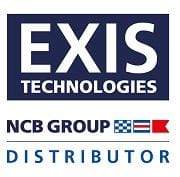
The IMDG Code Latest Edition containing Amendment 41-22 is out and ready for optional or provisional use until December 31, 2023. This summary provides updates as listed in Amendment 41-22 of the IMDG Code's latest edition. The updates came out in a digital-only format in 2022. The current edition updates the printed version as of January 1, 2023.
No major changes emerge from the incremental and technical differences in the new IMDG Book. However, substantial small changes must be understood or risk creating compliance issues.
The calendar year 2023 is provisional as the printed final version hits the bookshelf. Thus, users must follow the IMDG Code Latest Edition as of January 1, 2024. Until then, adherence to the 22-41 Edition is optional.
This summary isn't all-inclusive and should not be used as a replacement for the complete IMDG Book.
Summary of Changes to IMDG Code Latest Edition – Amendment 22-41
Most changes are incremental, changing little things throughout the Code that clarify and simplify storing and transferring procedures and processes. Of particular note are significant changes to the testing and certification of aerosols, cylinders, and pressure vessels and a new chapter.
Part 1, General Provisions
Chapter 1.2 contains updated definitions and some new definitions that add clarity to the descriptions and uses. For example, inner vessel and pressure receptacle shell are new definitions.
The definitions for "tube" and "cylinder" remove the word "transportable." Conversely, the meaning of "metal hydride storage system" changed to an updated version to eliminate confusion.
The word ohm has been added as a unit of measurement for "electrical resistance" in the copy and the tables.
Broadly, Amendment 41-22 of the IMDG Code updates references to other industry manuals to their current versions. For example, Globally Harmonized System of Classification and Labelling of Chemicals is now referenced as the Ninth Revised Edition.
Part 2, Classification
Chapters 2.4 and 2.5 list the new technical names of a "self-reactive" and three organic peroxides.
Chapter 2.5 updates the testing for "low-dispersible radioactive material"
Section 2.8.3 has a new in vitro test for skin classifications for corrosive exposure.
Section 2.9.4.3.4 adds clarification for Chronic 1 and 2 marine pollutants classifications.
Section 2.9.4.7 modifies the requirement of test summaries for lithium batteries and does not apply to small button power cells already inside the equipment.
Part 3, Dangerous Goods List
Chapter 3.2 has a new UN number, "UN3550," for cobalt dihydroxide powder.
The UN number "UN3208" changed the expected quantity code from E2 to E0 and "UN3209" from E0 to E2.
Segregation Group UN2796 changed slightly from SGG1a to SGG1.
Chapter 3.3 (Special Provisions)
Special Provision 225 clarifies portable fire extinguishers apply even when other components ship with the material. The note also says items like hoses and nozzles can be temporarily shipped loose as long as it doesn't influence the safety of pressurized containers.
There are three new Special Provisions. Provision 396 lists instructions on "large and robust" articles with open-valve gas cylinders. New Special Provision 397 notes that mixtures of oxygen and nitrogen can ship as compressed air if the oxygen is 23.5% or lower. Finally, Special Provision 398 states UN1055, "butylenes" means all isomers of butylene mixtures.
Part 4, Tank and Packing Provisions
Section 4.1.1 – The packing instructions for P003, P004, P005, P006, P130, P144, P408, P801, P903, P906, P907, P909, and P910 received notes that the 400 kg limit does not apply when shipped in overpacks and non-specification packaging.
Packing instruction P920 specifically addresses packaging for mixtures of fluorine and nitrogen.
Section 4.1.1.19.2 updates the maximum water capacity from 1,000 to 3,000 liters.
Part 5, Consignment Procedures
Section 5.1.2.1 clarifies labeling requirements on overpacks of radioactive material. Labels must be on both sides.
Section 5.2.1.10.2 removes the requirement to show the phone numbers on Lithium Battery Mark.
Section 5.4.1.4.3.9 added the labeling requirements for temperature-controlled substances and stabilized substances. Where applicable, the words “TEMPERATURE CONTROLLED” and "stabilized" must be printed on the corresponding containers.
Part 6, Package Testing and Construction
Section 6.2.1.4.3 adds the sentence: "Pressure receptacle shells and the inner vessels of closed cryogenic receptacles shall be inspected, tested, and approved by an inspection body.”
Section 6.2.1.5.1 updates the inspection requirements for new pressure receptacles.
Section 6.2.1.6.1 changes the frequency of periodic inspections of existing pressure receptacles.
Section 6.2.2 adds several ISO standards for pressure vessels.
Section 6.5.2.1.2 adds that "REC" must be printed on IBCs made from recycled material.
Amendment 22-41 adds an entire new (Chapter 6.10) that addresses fiber-reinforced plastics (FRP), which are now approved for use by the UN.








